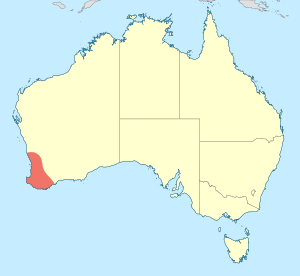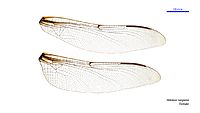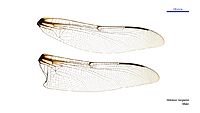Petalura hesperia facts for kids
Quick facts for kids Petalura hesperia |
|
|---|---|
| Scientific classification | |
| Genus: |
Petalura
|
| Species: |
hesperia
|
 |
|
The Petalura hesperia, also known as the western petaltail or giant western dragonfly, is a special type of dragonfly. It belongs to the Petaluridae family and is found only in Western Australia.
These amazing insects live near the south-western coast of Australia. You can often spot them close to streams and rivers, which are perfect places for them to lay their eggs and for their young to grow.
Life Cycle: Larvae
Petalura hesperia dragonflies start their lives as larvae. The female dragonflies lay their eggs along the edges of streams and rivers. These larvae are called semiaquatic, which means they live partly in water and partly on land.
To stay safe, the larvae dig burrows in the mud along the sides of rivers or streams. These burrows act like their own little homes. If the summer gets very dry, they can dig even deeper into the mud to keep their skin moist and prevent drying out.
Even as young larvae, these creatures are nocturnal predators. This means they hunt for food mostly at night! They eat other small larvae and tiny insects like cockroaches and spiders that live near their muddy burrows. They prefer to live in fresh water streams and rivers in low-lying areas, and sometimes even in rainforests found on higher ground.
Life Cycle: Adult Dragonflies
Adult dragonflies from the Petalura group are often called 'petaltails'. This cool name comes from the special tail parts, called appendages, that the male dragonflies have. These tail parts can even be different colors!
Just like their young, adult western petaltails live near streams and rivers and are also semiaquatic. They are also nocturnal hunters, but they go after bigger prey than the larvae do. Adults will eat larger larvae and other bigger insects.
When it's time to mate, adult dragonflies meet on vegetation (plants). After mating, the female lays her eggs in old plant material. Adult western petaltails usually live for about 4 to 6 months. Many other dragonfly species might take a few years to complete their life cycles, but Petalura dragonflies typically complete their life cycle in one year.
Gallery



